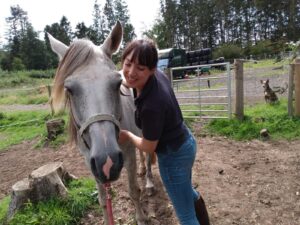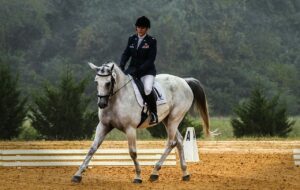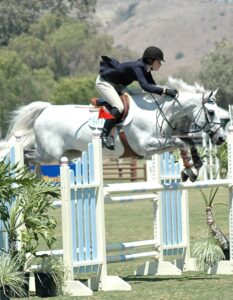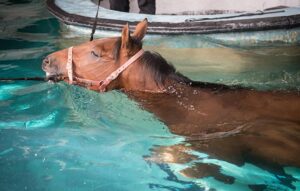The Iliopsoas muscle is a deep stabilising muscle in the horse. It consists of the Psoas Major, the Psoas Minor and the Iliacus and is non weight bearing muscle. It attaches behind your horses last ribs and lumber vertebrae and runs underneath the vertebrae transverse processes to insert on the pelvis and hip. This muscle can be easily injured but not so easily diagnosed as it is a deep muscle so difficult to palpate. So how do you know if your horse may have a Iliopsoas injury?
What is the Position and the Function of the Iliopsoas Muscle in Horses?
Psoas Major and Minor
Origin
- Underside of the last 2 ribs
- Tranverse processes of lumbar vertebrae.
Insertion
- Lesser trochanter of the femur
- Fuses with iliacus.
Iliacus
Origin
- Wing of sacrum
- Sacroiliac ligament and surface of ilium
- Psoas minor tendon
Insertion
- lesser trochanter of the femur
Function of Psoas and Iliacus in Horses
The Psoas muscles and the Iliacus are responsible for the same movements in the horse
- Outward rotation of the hindlimb
- Hip joint flexion
- Hindlimb protraction
- Vertebral column stabiliser
The Iliopsoas muscle group are the muscles that connect the front of your horse to the back. They are non weight bearing and their health is vital for efficient hind limb protraction whilst maintaining postural stability.
How Injury May Occur
Injury to these muscle is worryingly easy due to their position and function. Pain and strain in this area can be the result of several factors:
- Serious fall
- Getting cast
- Training with head and neck behind the vertical
- Loss of balance due to poor surfaces
- Inadequate warm up
- Tired and fatigued muscles
- Injury to any associated muscles leading to increased strain on the Iliopsoas group
How to Tell if your Horse May Have Iliopsoas Pain
Pain responses to specific areas
- sacro iliac region
- tuber coxae
- last rib insertion
Other signs
- uneven stride length
- lack of power
- asymmetrical musculature
- lame behind
- over compensation when moving, of the uninjured hind leg
- resistance to collection
- inability to step under
- tail carried to uninjured side
Rehab for Horses With Iliopsoas Injury
Its very difficult to release this muscle as it is so deep. Massage and releasing tension in surrounding muscles can help, as can manual releases performed when your horse receives an Equine Massage Session.
The best thing is prevention, so make sure your horse is always correctly warmed up, has good fitting tack, has good hoof care and foot balance, and regular lessons to ensure the rider is well balanced.
Book an Equine Sports Massage
Areas covered in UK: Worcestershire and surrounding counties.
Book an Equine Sports Massage or Call Emily Walters on 07983 565 438






